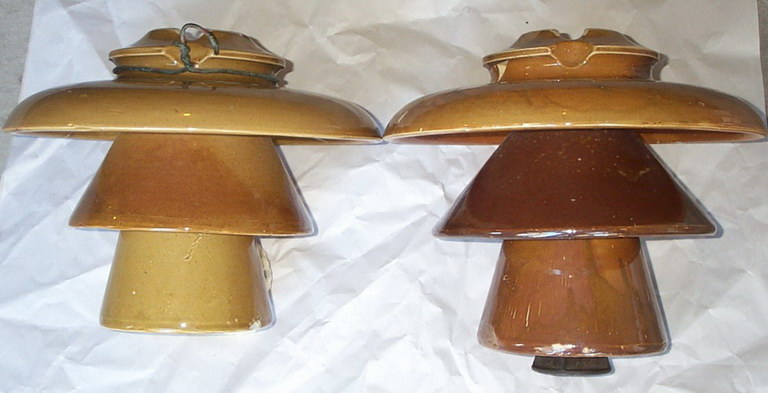
Fred Locke
Multipart Porcelain Insulators
(page 5 of 6)
Go to Main Page
Go to Multipart History Page 1 Page 2 Page 3 Page 4 Page 5 Page 6
Click on the links below to view each style:
M-3710
and M-3812 (not cataloged)
Production date:
These two insulator designs are basically hybrids of the M-4384 and M-3721 shells. Locke did not catalog M-3710 and M-3812 as such and the exact reason for their odd combination of parts is unknown. They were used on the famous “Locke 25 line” that was the only known historic use of the two part CD 342 Locke cemented all glass multi part. They were used intermittently with the CD 342 and the few historic photos of the line show a random mix of insulators in use. Any porcelain Fred Locke multiparts from this line are rare and only a handful have been recovered whole. The exact reason these hybrids were assembled and used in large numbers on this line is unknown. It appears in the few surviving photos of the line that the insulators were randomly installed on the line.

M-3710 (left) and M-3812 (right)
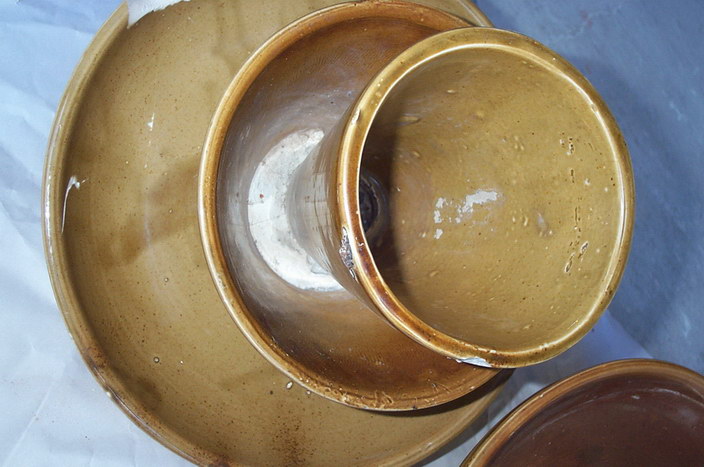

Underside of M-3812
M-3721
(Locke catalog #)
Production date: 1903
This insulator was
specifically designed for the famous 127 mile Borel transmission line the
line ran from the Borel powerhouse on the Kern River to downtown Los Angeles,
CA. The line consisted of
two independent parallel circuits, which operated at 55 kV. The line was in
operation up into the 1920's, but was gradually rebuilt as a suspension line
while other sections, mainly across the antelope valley, were abandoned.
About 10 to 12 specimens were “kitsulatored” together from all mint shells or shells with minor repaired damage. Only two whole original mint ones were found. Most were found with marking 7-1. Specimens have also been found with marking 6-1 but these are very rare. A few M-3721 specimens have been seen on the Locke 25 line in Colorado. It is not known if any were ever actually recovered by collectors from this line.
M-3721A
(not cataloged)
Production date:
This insulator is essentially a M-4325 with its top two skirts glaze-welded together making it a three part. One damaged specimen was discovered on the Locke 25 line in Colorado and there may have been others as well. Reportedly, Mike Miller found a second top skirt. One solitary whole specimen surfaced in the collection of Gill Hedges in Seattle. It is identical to the Locke 25 line specimens, but unfortunately its pin was removed. There is some cement still in its pin hole that looks identical to the cement on insulators from the Locke 25 line both specimens are unmarked other then letters on the underside of the skirt, but have Fred Locke colors. They were made green trimmed and have no mold line.
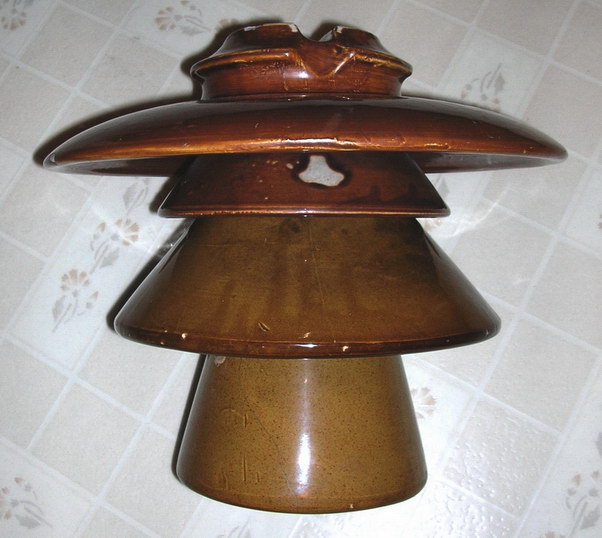
M-3721A
M-3721B
(not cataloged)
Production date:
This insulator appears to have been a hybrid of the M-3721 and the M-4325. There are a handful of repaired specimens with marking 7-1 in collector’s hands, but only one was not repaired. All were found on the Locke 25 line in Colorado. There is also one still in service on the original Colgate line near Wheatland, CA as of 2012, which makes that specimen the oldest know transmission insulator still in service anywhere. All specimens have marking 7-1. A few damaged ones from the Locke 25 line were also unmarked. Because this insulator was used in two widely different locations and some early catalog cuts suggest this style, one might be able to conclude that this style was actually a real cataloged style and not a hybrid design like the M-3710.
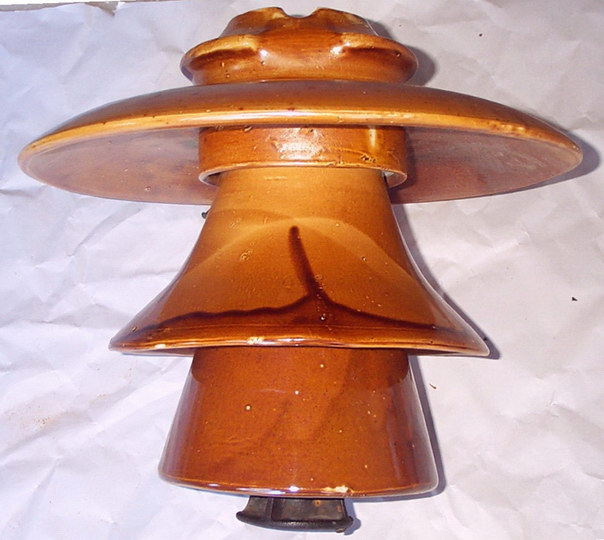
M-3721B
M-3725
(Locke catalog #)
Production date:
The M-3725 was one of the
first successful large multiparts that could handle voltages in the 60 kV range.
Production began sometime in 1902 and continued until about 1905. Three major
historically important early lines exclusively used these insulators.
The 100 mile long Spokane WA - Burke Id constructed in 1902-03; the two
lines of the American River Electric Co (1903) who's power plant on the American
River near Placerville, Ca supplied
power to the Mother load gold mines and the gold Dredges near Folsom, CA; and
the 100 mile long Guanajuato line that supplied power to the gold mines in
Guanajuato, Mexico.
Additionally a large number
of these insulators were used on early upgrades of the Colgate and Electra
transmission lines that became the early backbone of The Pacific Gas and
Electric Co. The Majority of specimens in collector hands came from California
sources along with about 15 or so that were found on the Burke line primarily in
the area around Burk and Wallace, Idaho.
Remarkably some
M-3725 specimens survived in service on the Original American River lines into
the late 1980's .The mild dry weather conditions in the Sierra foothills may
account for there long lived service. The last known M-3725 was removed from
service in a sub station south of Colusa, Ca in 2004 and is now in the Bill
Rohde collection.
The earliest M-3725's were
produced in a two part mold and have a clearly visible mold line extending from
rim to rim all of the known two part mold with one solitary exception were found
on the Burke line in Idaho. All have the 6-1 marling and tend to have sandy tan
glazes characteristic of early mid 1902 production.
The later three part mold
top skirt versions have both the 6-1 or 7-1 marking and come in a very wide
variety of glazes. On very late
production M-3725 is know with a thick heavy green trimmed top (no mold line).
It's likely production was 1904 or even later. This specimen originated
in PG&E territory.
Reportedly at least one
specimen was brought back from Mexico, but I cannot confirm any details of this.
M-3725's were used to replace M-2795's on the Bay Counties and Standard Electric lines in northern California. They were also used on the Spokane Falls to Burke, ID line. Many M-3725's are crude looking and most found in California have the #7-1 marking. The Burke line ran from Spokane Falls hydro plant southeast crossing swamps at south end of Lake Coeur d' Alene and back northeast to Kellogg, ID. Then on to southern end of Burke canyon and turned north to the Hecla mine in Burke. The line consisted of one 60kV circuit with two insulators mounted on a crossarm and the ridge-top insulator was mounted on a standard pin with a hole drilled in the top of the pole. The line was 110 miles long. Reports from locals say the line was dismantled and upgraded in 1938. Most on the Burke line have the #6-1 marking. M-3725's were used on the line that ran from Alta to Grass Valley, CA.
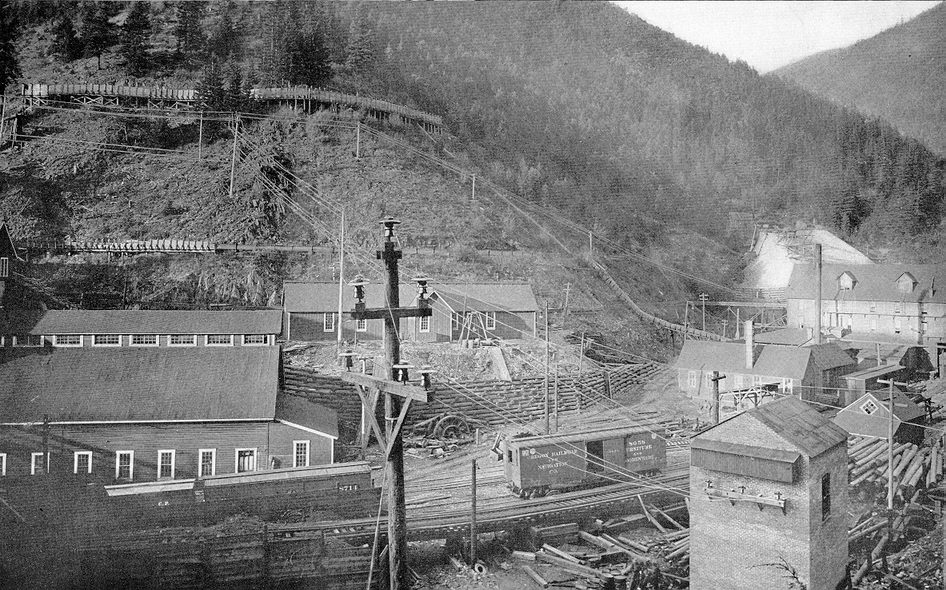
M-3725's at the Burke step-down transformer station. From the August 1904 issue of Electrical Age. (Courtesy of Bob Stahr)
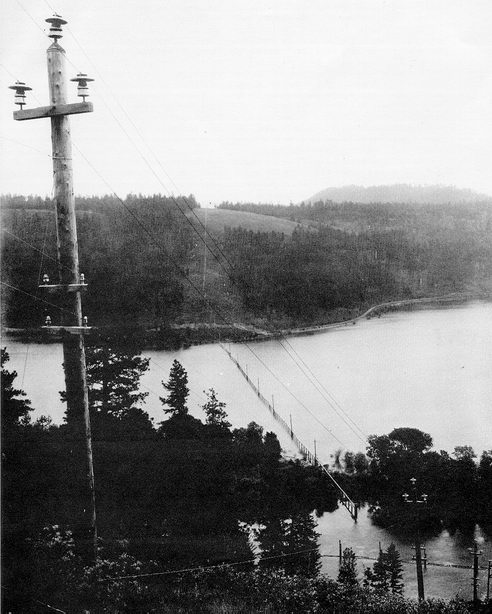
M-3725's on the Burke, ID line. Photograph from A History of the Washington Water Power Co. 1889-1989. (Courtesy of Ed Sewall)

M-3725 with Fred Locke marking #7-1.
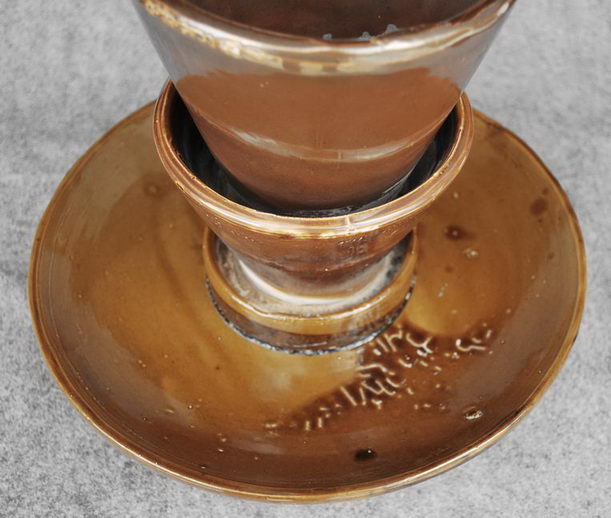
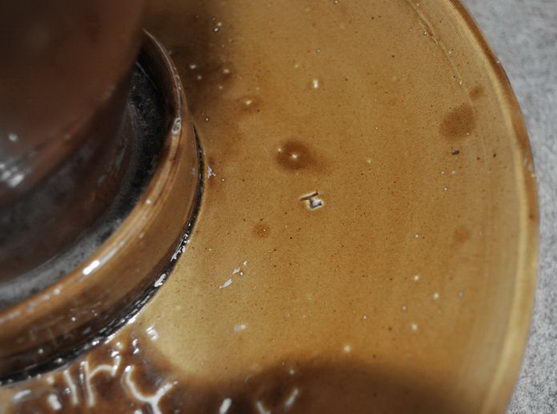
(See M-3710)
Go to Multipart History Page 1 Page 2 Page 3 Page 4 Page 5 Page 6
Go to Main Page